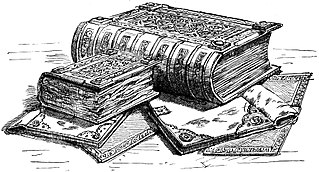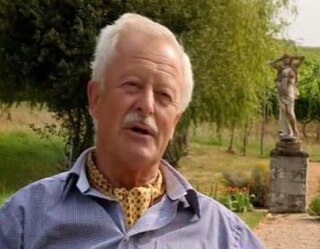
Manorialism was an essential element of feudal society. It was the organizing principle of rural economy that originated in the Roman villa system of the Late Roman Empire, and was widely practiced in medieval western and parts of central Europe as well as China. It was slowly replaced by the advent of a money-based market economy and new forms of agrarian contract.
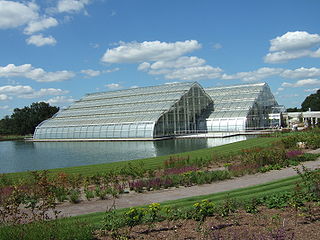
Wisley is a village and civil parish in Surrey, England between Cobham and Woking, in the Borough of Guildford. It is the home of the Royal Horticultural Society's Wisley Garden. The River Wey runs through the village and Ockham and Wisley Commons form a large proportion of the parish on a high acid heathland, which is a rare soil type providing for its own types of habitat. It has a standard weather monitoring station, which has recorded some national record high temperatures.

Send is a village and civil parish in the Guildford borough of the English county of Surrey. Send acquired its name during the Great Vowel Shift from the word sand, which was extracted at various periods until the 1990s for construction and other purposes at pits in the outskirts of the parish. The north of Send is at the southern-eastern edge of the Bagshot Formation.

A manor house was historically the main residence of the lord of the manor. The house formed the administrative centre of a manor in the European feudal system; within its great hall were held the lord's manorial courts, communal meals with manorial tenants and great banquets. The term is today loosely applied to various country houses, frequently dating from the late medieval era, which formerly housed the gentry.

The Salford Hundred is one of the subdivisions of the historic county of Lancashire, in Northern England. Its name alludes to its judicial centre being the township of Salford. It is also known as the Royal Manor of Salford and the Salford wapentake.

The village of Merrow, in Surrey, England in the 21st century constitutes the north-east suburb of Guildford. It is however centred 2 miles (3.2 km) from the town centre, right on the edge of the ridge of hills that forms the North Downs. Although now a relatively anonymous suburb, the village can trace its origins back many hundreds of years. According to the Institute for Name-Studies, Merrow means 'fat', literally, "probably referring to the high fertility of the land".

Clandon Park House is an early 18th-century grade I listed Palladian mansion in West Clandon, near Guildford in Surrey.
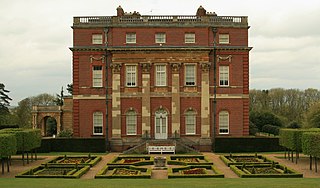
West Clandon is a village in Surrey, England within 1 mile of the A3. It is situated one mile north west of the much smaller separate village of East Clandon.
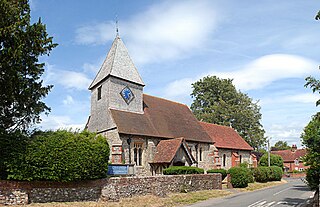
East Clandon is a village and civil parish in Surrey, England on the A246 between the towns of Guildford to the west and Leatherhead to the east. Neighbouring villages include West Clandon and West Horsley.

Addingrove is a former hamlet in Buckinghamshire, about 4 miles (6.4 km) northwest of the market town of Thame in neighbouring Oxfordshire. The settlement is on the B4011 road between Oakley and Long Crendon.
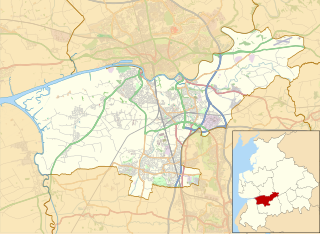
Cuerdale is a civil parish in the South Ribble district of Lancashire, England. It includes Cuerdale Hall and has no substantive settlements. It originated as a township in the parish of Blackburn, becoming a separate civil parish in 1866. From 1894, it formed part of the Preston Rural District, and under the Local Government Act 1972 became part of the South Ribble district in 1974.
Thomas Onslow, 2nd Baron Onslow was a British politician and landowner who commissioned the building of Clandon Park House in the 1730s.
The Manor of Alverton was a former manorial estate located in the hundred of Penwith, west Cornwall, England, UK.

Arlescote is a village in Warwickshire, England.

Pixton Park is a country house in the parish of Dulverton, Somerset, England. It is associated with at least three historically significant families, successively by descent: Acland, amongst the largest landowners in the Westcountry; Herbert, politicians and diplomats; and Waugh, writers. The present grade II* listed Georgian mansion house was built circa 1760 by the Acland family and in 1870 was altered by Henry Herbert, 4th Earl of Carnarvon (1831–1890). Although Pixton Park is situated within the manor of Dulverton, the manorial chapel relating to Pixton is situated not at Dulverton but within the Church of St Nicholas, Brushford, across the River Barle, as the lordship of the manor of Dulverton was held from 1568 by the Sydenham family seated at Combe House, on the opposite side of the River Barle to Dulverton and Pixton.

Feudalism as practiced in the Kingdom of England was a state of human society which was formally structured and stratified on the basis of land tenure and the varieties thereof. Society was thus ordered around relationships derived from the holding of land, which landholdings are termed "fiefdoms, traders, fiefs, or fees".

